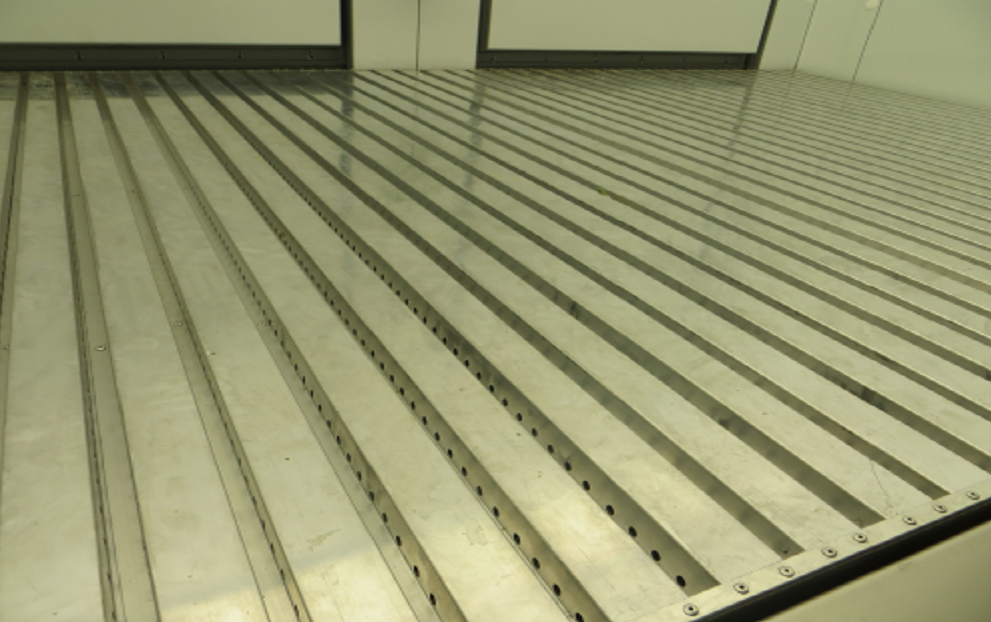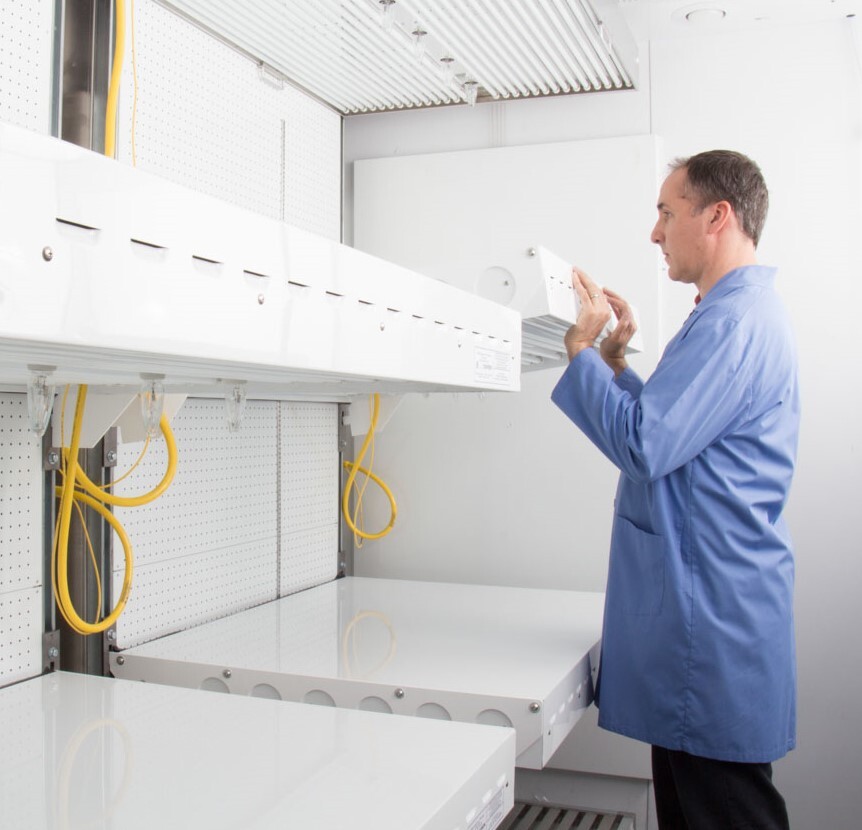What are the functions of a plant growth chamber?
Mar 15, 2024
Plant growth chambers are critical tools for the advancement of plant science research. Today, such research is a central contributor to addressing important global challenges related to food scarcity and sustainable agriculture. To understand their contribution it is essential to know: What are the functions of a plant growth chamber?
In short: Plant growth chambers enable scientists to replicate a vast array of climatic conditions within a controlled setting, facilitating precise experiments in plant physiology, growth, and development. By isolating variables, researchers can use them to analyze the effects of environmental factors on plant behavior, which is essential for experimentation and the discovery process.
Further, plant growth chambers provide consistent and repeatable environmental conditions. Documenting and being able to replicate experimental conditions are important to meet the standards required for publication in peer reviewed journals or other objectives such as advancing commercial research and crop related development pipelines.
In this guide, we’ll explore the functions of a plant growth chamber, giving you an understanding of how they work and contribute to various aspects of advancing the work of plant scientists.

Quick Takeaways
- Plant growth chambers can replicate diverse climates, advancing research for a variety of plant science disciplines — plant biology, phytopathology, plant biotechnology and more
- Core functions of a plant growth chamber include controlling environmental factors such as temperature, airflow, lighting, CO2, and humidity
- Advanced programming and design in plant growth chambers enable precise environmental controls and targeted research for various seasonal and stress conditions
- Accompanying software systems offer capabilities such as remote monitoring and data analytics to streamline experimental management
- The choice between adaptable and preconfigured models offers researchers the flexibility to choose a plant growth chamber that meets their specific needs

Environmental Parameters: Core Functions of a Plant Growth Chamber
Understanding the intricate relationship between plants and their environment is crucial for using plant growth chambers correctly. Each environmental parameter that plant growth chambers are designed to control—including temperature, airflow, lighting, humidity, carbon dioxide (and other gases)—has a role in simulating the diverse climates plants encounter in nature.
Temperature
Temperature control is vital in plant science research because it directly affects physiological processes like germination and phenology (among others). Precise temperature management enables the simulation of environmental conditions from freezing cold to extreme heat, facilitating the effective study of plant adaptability and stress responses.
The temperature range and stability enabled by plant growth chambers requires equipment and controls to actively heat or cool in the daytime period (lights on) to achieve any set point between +10 degrees Celsius and up to at least +40 degrees Celsius. Larger rooms may be limited to slightly lower maximum temperatures. In the night period (lights off), the same equipment can typically control the temperature to as low as +4 degrees Celsius.
Temperatures lower or greater than this range significantly suppress photosynthetic rate, so is not required for the majority of plant growth research. Of course if the research goal includes frost resistance or high temperature stress responses, options are available which can exceed those end points in either one or both directions.
Lighting
Lighting control is a cornerstone of plant growth chamber functionality, encompassing the adjustment of light intensity, spectrum, and photoperiod. This control is crucial for photosynthesis experiments, plant morphogenesis studies, and circadian rhythm research. By fine-tuning lighting conditions, researchers can investigate how different light qualities affect plant growth, flowering, and seed production, providing insights into optimal conditions for various plant species.
As mentioned, light intensity is the driver of photosynthesis, so it is at the core in the selection of any plant growth chamber. Given its quantum nature, light intensity in plant growth research is correctly reported as a measurement of Photosynthetic Photon Flux Density or PPFD. The units are micromoles per square meter per second or uMol/m2/sec. , measured from 400nm to 700nm which is known as Photosynthetically Active Radiation or PAR. It is the wavelength range primarily responsible for driving photosynthesis. It is becoming more well known that light <400 nm and >700 nm can have effects on plant chemistry and morphology. But this short article cannot begin to address those aspects and assumes a general purpose broad spectrum source to deliver PAR plus some radiation beyond the 400-700 nm band.

Airflow
Airflow within a plant growth chamber ensures the maintenance of uniform conditions, preventing the formation of microclimates and ensuring that each plant receives an equal share of resources. Proper air circulation is essential for mimicking natural wind patterns, which can strengthen plant structures and enhance gas exchange processes, ultimately influencing plant growth and health. Generally there are three types of airflow directions; downward, horizontal and upward as pictured below. The strategic management of airflow also aids in temperature and humidity regulation, showcasing its multifaceted role in plant development studies.

Carbon Dioxide (CO2)
CO2 concentration within a plant growth chamber is another critical parameter, important to studying photosynthesis and plant respiration. Enhanced CO2 control enables scientists to examine how plants respond to varying levels of this gas, which is particularly relevant in the context of global climate change and its impact on plant development.
Research in this area critically contributes to our understanding of how plants can be optimized for food production and carbon sequestration.
Humidity
Humidity control in plant growth chambers impacts transpiration rates and water use efficiency, making it indispensable for drought stress experiments and water-related physiological studies. By adjusting humidity levels, researchers can explore plant responses to water availability, which informs irrigation practices and water conservation strategies in agriculture. Precise control over humidity also aids in creating a balanced environment for optimal plant growth and development.
Functional Features
Modern plant growth chambers offer a suite of advanced options and features designed to enhance research capabilities through precise environmental manipulation. These advancements extend across various aspects of chamber functionality.
Control & Programming
Modern plant growth chambers are equipped with advanced control systems and programming options, allowing researchers to tailor environmental conditions with precision.
These systems enable the simulation of complex environmental sequences, including diurnal cycles and seasonal variations, which are crucial for studying plant responses over time. Programmable interfaces facilitate the setting of precise setpoint targets for temperature, humidity, CO2, and lighting parameters, ensuring planned conditions for each experiment are maintained and can be replicated accurately.
Achieving setpoint targets is accomplished through two primary methods: ramping and step changes. Ramping allows for gradual adjustments to environmental conditions, enabling plants to acclimate smoothly to new settings over a defined period. This method is particularly useful for simulating less dramatic weather transitions.
In contrast, step change programming activate immediate adjustments to reach a new setpoint as quickly as the chamber's mechanical systems will allow, which is more suitable for initiating rapid environmental changes.

Refrigeration
Refrigeration plays a critical role within plant growth chambers - simulating hot or cold stress or mimicking weather variability that requires temperature variations. Refrigeration systems allow for temperature adjustments over a range of temperatures, maintaining stability even when ambient conditions (e.g. temperature, humidity) outside of the plant growth chamber fluctuate.
Since the chambers are generally not completely sealed units, they do draw air from ambient. In some countries ambient conditions in which the plant growth chambers themselves are kept can vary dramatically. Because they draw air from air outside the chamber, without adequate refrigeration, airflow, and humidity control systems working together to achieve setpoint conditions, ambient conditions can have an unaccounted for impact on inside the chamber if not controlled properly.
Construction & Design
The construction and design of plant growth chambers are pivotal for ensuring optimal performance. Materials and insulation are selected based on their ability to maintain internal conditions with minimal energy consumption.
Transparent materials may be used to enhance lighting efficiency or provide a protective barrier from hot lamps, while insulation quality directly impacts the chamber's ability to hold precise temperature and humidity levels. The overall design also considers ease of access for service and cleaning to remove soil, leaves and maintain a sterile research environment.
Types of Chambers: Reach-in vs. Walk-in
Reach-in and walk-in chambers cater to different research needs. Reach-in chambers, compact and efficient, are suited for experiments requiring fewer plants or smaller specimens. In contrast, walk-in chambers offer the space needed for larger plants or experiments involving a significant number of specimens. While reach-in chambers are more accessible and cost-effective for small-scale studies, walk-in chambers provide the versatility needed for larger scale research projects.
Benching & Layout
The internal benching and layout of plant growth chambers are customizable to accommodate various plant sizes and research designs. Options range from fixed shelving to adjustable racks, allowing for the efficient organization of plants and optimal light distribution. This flexibility supports a wide range of research activities, from seed germination studies to full-cycle growth experiments.
Adaptable vs. Preconfigured Models
Choosing between adaptable and preconfigured models depends on specific research requirements. Adaptable models offer the flexibility to modify environmental conditions and chamber configurations, catering to specialized research needs.
Preconfigured models, while less flexible, provide a turnkey solution for standard and relatively fixed research applications, often resulting in quicker setup times and lower initial costs.

Irrigation Systems
The integration of irrigation systems within plant growth chambers facilitates precise water management and nutrient delivery, essential for studying plant water relations and optimizing growth conditions. Automated irrigation systems ensure consistent moisture levels, reducing the labor involved in manual watering and enhancing the reproducibility of stress experiments.
Streamlining the Management of Plant Growth Chamber Functions
The process of managing the functions of plant growth chambers has been significantly streamlined through the advent of sophisticated software solutions. These systems enhance functionality and ease of use of growth chambers by enabling capabilities such as remote monitoring, automated alerts, and access to data analytics dashboards.
Remote monitoring capabilities allow plant researchers to oversee chamber conditions from any location, ensuring environmental parameters remain within desired ranges without the need for being physically present at the chamber. For example: A scientist can be alerted via their control dashboard when a chamber moves out of the setpoint target for a particular parameter, such as temperature.
As a result, the user can quickly remediate the problem to maintain the integrity of the experiment. Most alert systems offer advanced optimization options, such as choosing a specific time period after which a user must be notified. This feature is particularly beneficial for long-term experiments where constant supervision is impractical.
Data analytics dashboards offer a comprehensive overview of environmental conditions over time, providing valuable insights into the effects of specific parameters on plant growth and development. By analyzing trends and patterns, researchers can optimize chamber settings for future experiments, contributing to more efficient and effective research processes.
Together, these software features represent a significant advancement in the management of plant growth chamber functions, offering researchers the tools needed to conduct sophisticated plant science research, seed, and other product development with greater ease and accuracy, and on a greater scale.
In Conclusion
Plant growth chambers are indispensable for plant science. They offer unparalleled precision in environmental control for scholarly as well as for commercial applications. By simulating a wide range of climatic conditions, these chambers facilitate groundbreaking insights into such fields as climate change and adaptation to a wide range of biotic and abiotic stress. Sometimes with profound yield and nutrition implications.
The many functions of a plant growth chamber discussed in this article, from precise temperature regulation to sophisticated software for chamber management, underscore the chambers' critical role in advancing the discovery process.
As we face global challenges like food scarcity and the need for more sustainable agriculture practices, the insights gained from research conducted within these controlled environments are more valuable than ever. Plant growth chambers, therefore, not only represent a cornerstone of plant science research but also hold the key to unlocking solutions for some of the most pressing issues of our time.

